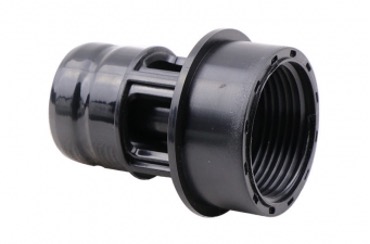
Materials
Wide material options for your requirements
Injection Molding


ABS Basic
ABS injection molding plastic is ideal for structural applications that require impact resistance, strength, and stiffness. It has excellent dimensional stability and is easy to paint and glue, making it the common choice. As a thermoplastic, ABS plastic can also be easily recycled.
Color - Black, white
General Characteristics -
- Lightweight
- Fatigue resistance
- Greater tensile strength
- Excellent chemical resistance
Common Applications -
- Trays
- Pipes & fittings
- Household appliances
- Machine parts and rollers
Material properties -
| Modulus of elasticity / Young Mod. | 1.35 - 2.35 GPa |
| Yield Strength | 30 - 55 MPa |
| Ultimate Tensile strength | 30 - 57 MPa |
| Elongation at break | 10 - 70 % |
| Flexural Strength | 47 - 92 MPa |
| Hardnes | 78 - 116 HRR |
| Max Working temp. | upto 70˚C |
| Thermal expansion coefficent | 80 - 121 µm/m-°C |
| Thermal conductivity | 0.170 W/m-˚C |
| UV Resistance | Poor |
Post-processing -
- Painting
Other information -
| Price | TBD |
| Lead Time | 2~3 weeks |
| Max part size | 300x300x300mm |
Disclaimer - Material properties are for general-purpose reference only and have been made available on a best effort basis for the users as a quick information guide for the material selection.
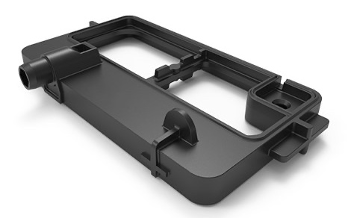
Polypropylene

Polypropylene
Polypropylene (PP) is an economical material that offers a combination of outstanding physical, chemical, mechanical, thermal, and electrical properties not found in any other thermoplastic. Polypropylene has excellent chemical resistance in corrosive environments where there are organic solvents, degreasing agents, or electrolytic attacks, but poor resistance to aromatic, aliphatic, and chlorinated solvents. It is lightweight, non-staining, and exhibits a low moisture absorption rate. It’s ideal for the transfer of hot liquids and gases, and in vacuum system atmospheres with high heat and pressure.
Color - Black, white
General Characteristics -
- High rigidity and
- High impact strength
- Excellent abrasion resistance
Common Applications -
- Barrels
- Sealing
- Wastewater
- Spray carrier
- Acid industry
- Emission equipment
- Automotive industry
- Drinking pipe accessories
- Corrosion-resistant tank
Material properties -
| Modulus of elasticity / Young Mod. | 1.31 GPa |
| Yield Strength | 31 MPa |
| Ultimate Tensile strength | 33 MPa |
| Elongation at break | 400% |
| Flexural Strength | 33 MPa |
| Compressive Strength | 34 MPa |
| Hardness | 78 Shore D |
| Max Working temp. | upto 80˚C |
| Thermal expansion coefficient | 114 µm/m-°C |
| UV Resistance | Poor |
Post-processing -
- Painting
Other information -
| Price | TBD |
| Lead Time | 2~3 weeks |
| Max part size | 300x300x300mm |
Disclaimer - Material properties are for general-purpose reference only and have been made available on a best effort basis for the users as a quick information guide for the material selection.
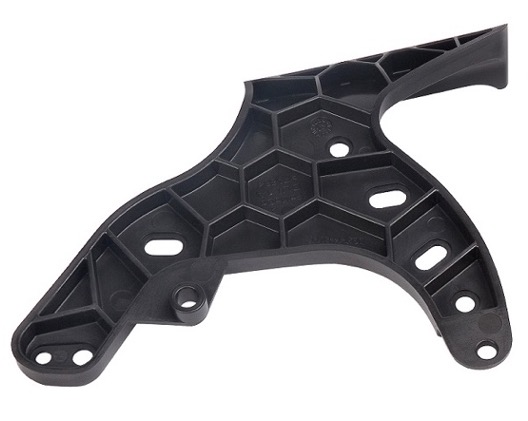
Polycarbonate

Polycarbonate
Polycarbonate is a transparent thermoplastic material with good strength and stiffness and outstanding impact resistance. It provides the best mechanical property and electrical insulation, high dimensional stability, and excellent creep resistance. Polycarbonate's toughness and optical clarity make it ideal for a wide variety of applications. And it can be used in temperatures up to +110°C.
Color - Black, transparent
General Characteristics -
- Strong and stiff
- Outstanding toughness
- High impact resistance
- Good optical clarity
Common Applications -
- Skylights
- Optical materials
- Lighting materials
- Architectural glazing
- Impact strength parts
- Transparent manifolds
- Semiconductor machinery components
Material properties -
| Modulus of elasticity / Young Mod. | 3.7 GPa |
| Yield Strength | 62 MPa |
| Ultimate Tensile strength | 64 MPa |
| Elongation at break | 90% |
| Flexural Strength | 91 MPa |
| Compressive Strength | 82 MPa |
| Hardness | 122 HRR |
| Max Working temp. | upto 110˚C |
| Thermal expansion coefficient | 68 µm/m-°C |
| Thermal conductivity | 0.19 W/m-˚C |
| UV Resistance | Poor |
Post-processing -
- Painting
Other information -
| Price | TBD |
| Lead Time | 2~3 weeks |
| Max part size | 300x300x300mm |
Disclaimer - Material properties are for general-purpose reference only and have been made available on a best effort basis for the users as a quick information guide for the material selection.
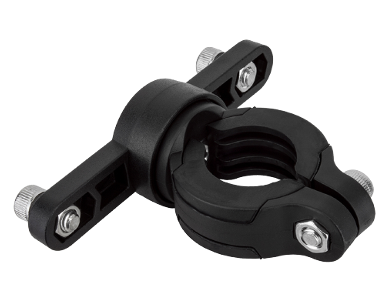
Nylon

Nylon
Nylon has excellent strength, stiffness, heat resistance, wear-resistance and lubricity, chemical resistance to hydrocarbon. Nylon is a relatively low cost to performance of engineering-grade polymers. Nylon is easy to process and can be reinforced with glass or carbon fiber to increase mechanical and thermal properties.
Glass-filled nylon is mostly used in applications that require properties such as high rigidity, high degree of hardness, high creep strength, high dimensional stability, good fatigue resistance, and high mechanical strength.
Color - Black
General Characteristics -
- Good heat resistance
- High friction resistance
- Tough, versatile, and cost-effective
- Good balance of impact and tensile strengths
Common Applications -
- Gears
- Bearings
- Bushings
- Insulators
Material properties -
| Properties | Nylon PA6 | Nylon PA6 GF10 | Nylon PA6 GF20 |
| Modulus of elasticity / Young Mod. | 3.7 GPa | 4.7 GPa | 5.13 GPa |
| Yield Strength | 63 MPa | 103 MPa | 115 MPa |
| Ultimate Tensile strength | 82 MPa | 92 MPa | 101 MPa |
| Elongation at break | 30% | 5% | 5.4% |
| Flexural Strength | 110 MPa | 140 MPa | 155 MPa |
| Compressive Strength | 103 MPa | - | 117 MPa |
| Hardness | 115 HRR | 119 HRR | 90 - 122 HRR |
| Max Working temp. | upto 90˚C | upto 100˚C | upto 130˚C |
| Thermal expansion coefficient | 90 µm/m-°C | 45 µm/m-°C | 34 µm/m-°C |
| Thermal conductivity | 0.245 W/m-˚C | 0.303 W/m-˚C | 0.345 W/m-˚C |
| UV Resistance | Moderate | Moderate | Moderate |
Post processing -
- Painting
Other information -
| Price | TBD |
| Lead Time | 2~3 weeks |
| Max part size | 300x300x300mm |
Disclaimer - Material properties are for general-purpose reference only and have been made available on a best effort basis for the users as a quick information guide for the material selection.
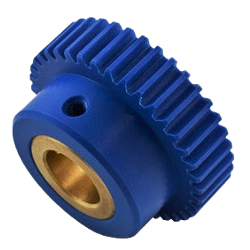
POM

POM
Polyoxymethylene (POM) or Delrin injection molding material, often referred to as Delrin or acetal is an engineered thermoplastic material that is used to manufacture parts that require increased stiffness, low friction versatility, and greater dimensional stability.
Color - Black, white
General Characteristics -
- High hardness
- Electrical insulation
- Dimensionally stable
- Self-lubrication tendency
- Good wear & fatigue resistance
Common Applications -
- Gears
- Bearings
- Conveyor parts
- Automotive parts
- Sporting equipment
- Electrical components
- Sliding & guiding parts
Material properties-
| Modulus of elasticity / Young Mod. | 2.76 GPa |
| Ultimate Tensile strength | 61 MPa |
| Elongation at break | 30% |
| Flexural Strength | 82 MPa |
| Compressive Strength | 93 MPa |
| Hardness | 120 HRR |
| Max Working temp. | upto 80˚C |
| Thermal expansion coefficient | 92 µm/m-°C |
| Thermal conductivity | 0.231 W/m-˚C |
| UV Resistance | Moderate |
Post-processing -
- Painting
Other information -
| Price | TBD |
| Lead Time | 2~3 weeks |
| Max part size | 300x300x300mm |
Disclaimer - Material properties are for general-purpose reference only and have been made available on a best effort basis for the users as a quick information guide for the material selection.
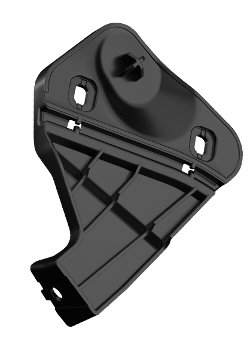
PC-ABS

PC-ABS
PC-ABS combines the strength and heat resistance of polycarbonate with the flexibility of ABS. Increased toughness and dimensional stability, higher heat resistance than ABS, and improved low-temperature impact resistance than PC. It is frequently used when increased mechanical properties are required when using ABS or when a lower-cost PC is required. The material can be modified by the addition of glass fiber, mineral fillers, and flame retardant.
Color - Black, white
General Characteristics -
- Good impact resistance with toughness and rigidity
- Very good indoor UV light color stability
- Exceptional low temp resistance
Common Applications -
- Automotive
- Electronic and telecommunications
Material properties -
| Modulus of elasticity / Young Mod. | 2.4 GPa |
| Ultimate Tensile strength | 54 MPa |
| Elongation at break | 30% |
| Flexural Strength | 90 MPa |
| Max Working temp. | upto 110˚C |
| Thermal expansion coefficient | 81 µm/m-°C |
Post-processing -
- Painting
Other information -
| Price | TBD |
| Lead Time | 2~3 weeks |
| Max part size | 300x300x300mm |
Disclaimer - Material properties are for general-purpose reference only and have been made available on a best effort basis for the users as a quick information guide for the material selection.
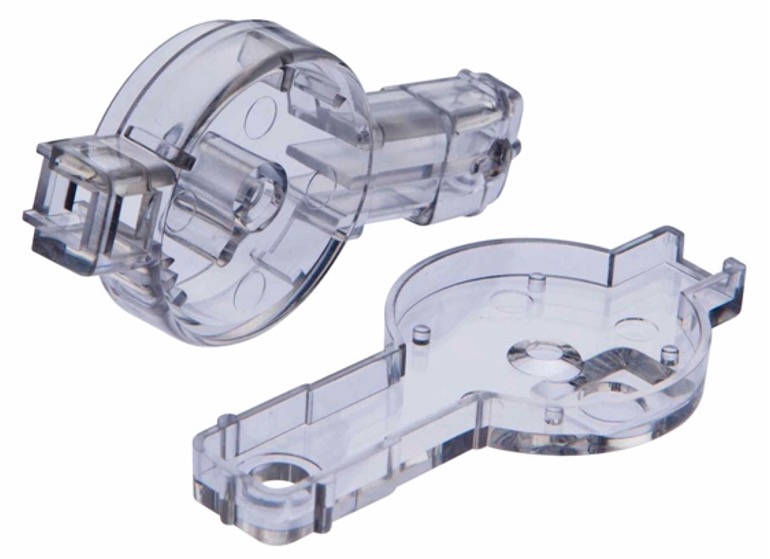
PMMA (Acrylic)

PMMA (Acrylic)
PMMA has excellent weathering resistance, especially applied to outdoor, ranking the highest in other plastics, and both a good surface hardness and gloss, processing plasticity, can be made of the required shape and products. Has extremely superior optical performance. Excellent transparency, light transmission rate of 92%, and can also be safe to use in outdoor.
Color - Transparent
General Characteristics -
- UV stable
- Scratch-resistant
- Dimensionally stable
- Resistant to salty water
Common Applications -
- Exhibitions
- Decoration
- Craft products
- Advertising signs
- Medical equipment
- Avionics and transportation
- Light, lighting lamp, and fixture
Material properties -
| Yield Strength | 60 MPa |
| Ultimate Tensile strength | 64 MPa |
| Elongation at break | 10% |
| Flexural Strength | 103 Mpa |
| Compressive Strength | 102 Mpa |
| Hardness | 69 HRR |
| Max Working temp. | upto 70˚C |
| Thermal expansion coefficient | 70 µm/m-°C |
| Thermal conductivity | 0.199 W/m-˚C |
| UV Resistance | Good |
Post-processing -
- Painting
Other information -
| Price | TBD |
| Lead Time | 2~3 weeks |
| Max part size | 300x300x300mm |
Disclaimer - Material properties are for general-purpose reference only and have been made available on a best effort basis for the users as a quick information guide for the material selection.
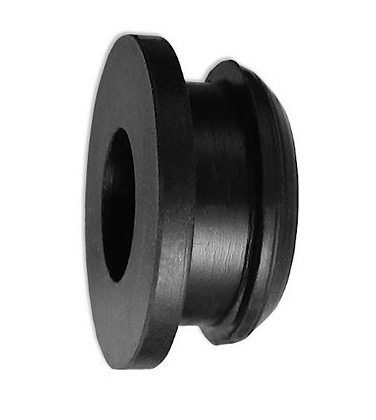
EPDM

EPDM
EPDM(Ethylene Propylene Diene Monomer) rubber is a low-cost option for parts having outdoor applications, exposure to moisture and electrical insulations, and, has good tear resistance. EPDM exhibits good resistance when exposed to ozone, UV rays, ageing and steam environments. However, EPDM is unsuitable for food applications and vulnerable to hydrocarbon oils, solvents, and some lubricating oils. Also, EPDM is not flame resistant.
General Characteristics
- Good resistance to UV, moisture, ozone & steam exposure
- Not suitable for the food industry
- Poor flame resistance
Common Applications
- Automobile - Seals, grommet, insulations, dampers
- Industrial - O-rings, hoses, gaskets, electrical insulation
- HVAC - Tubings, hoses, seals, gaskets, insulations
Post-processing
- Painting
Other information
| Price | TBD |
| Lead Time | 2~3 weeks |
| Max part size | 300x300x300mm |
Disclaimer - Material properties are for general-purpose reference only and have been made available on a best effort basis for the users as a quick information guide for the material selection.
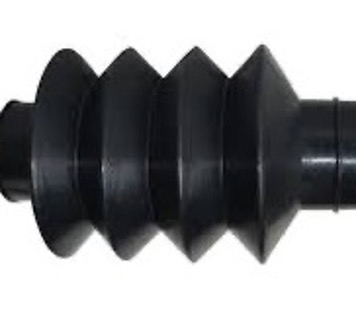
NBR

NBR
NBR (nitrile-butadiene rubber) is tough and resistant to varying temperatures. The percentage of acrylonitrile decides its oil resistance property. More acrylonitrile means more resistance to oil swelling and gases, and, makes it stronger. Less acrylonitrile means more flexibility at lower temperatures. NBR is not suitable for some chemicals, outdoor applications, and sunlight and has lower flame resistance.
General Characteristics
- Very tough
- Wide temp. resistance (-40˚C to 90˚C)
- Oil resistance applications
- Personal safety equipment
Common Applications
- Automobile - Oil seals, gaskets, hoses
- Laboratory safety equipment
Post-processing -
- Painting
Other information -
| Price | TBD |
| Lead Time | 2~3 weeks |
| Max part size | 300x300x300mm |
Disclaimer - Material properties are for general-purpose reference only and have been made available on a best effort basis for the users as a quick information guide for the material selection.
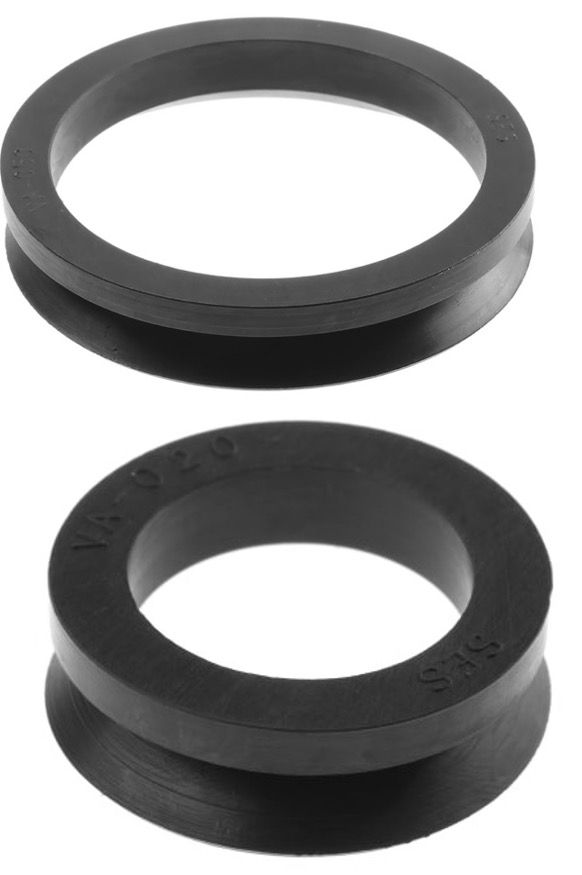
PVC nitrile

PVC nitrile
It is closed cell flexible foam created to provide flexible & soft insulation material. It has an excellent performance in hot and cold temperature environments. It has excellent moisture resistance capability saving the enclosed metal parts from corrosion and has some flame retardant characteristics.
General Characteristics
- Retains energy
- Flame resistance
- Resist moisture ingress
- Good acoustic vibration absorption
- Good hot & cold temperature performance
Common Applications
- Ducting
- Acoustics
- HVAC systems
- The construction industry
- Chiller & deep freezer applications
Post-processing -
- Painting
Other information -
| Price | TBD |
| Lead Time | 2~3 weeks |
| Max part size | 300x300x300mm |
Disclaimer - Material properties are for general-purpose reference only and have been made available on a best effort basis for the users as a quick information guide for the material selection.
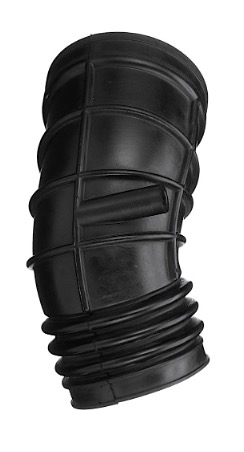
NBR + PVC

NBR + PVC
PVC greatly enhances ozone, thermal ageing, and chemical resistance of NBR in various industrial applications. PVC also vastly improves abrasion resistance, tear resistance, and tensile properties. It also adds gloss and improves the finish of the extruded stock and imparts flame-retardant character. NBR/PVC blends can be conveniently milled, extruded, and compression-molded
General characteristics
- Good tensile properties
- Good resistance to ozone
- Excellent abrasion & tear resistance
- Thermal ageing & chemical exposure
Common Applications
- Gaskets
- Feed hose covers
- Printing roll covers
- Conveyor belt covers
Post-processing
- Painting
Other information
| Price | TBD |
| Lead Time | 2~3 weeks |
| Max part size | 300x300x300mm |
Disclaimer - Material properties are for general-purpose reference only and have been made available on a best effort basis for the users as a quick information guide for the material selection.
 3D SculpLab
3D SculpLab